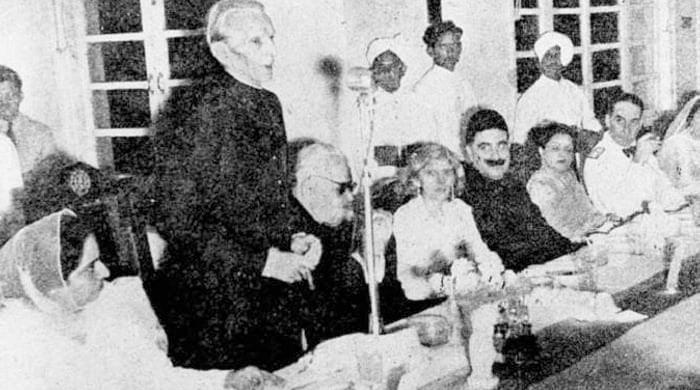Creation of Pakistan, in August 1947, can be seen as the logical outcome of the Lahore Resolution of 23rd March 1940. While demands for an independent homeland for the Muslims had been made earlier, this Resolution made a clear call for an independent Muslim homeland, in Muslim majority areas of British India. This historic phenomenon can be better understood in its politico-historical context, one can pick another dimension to it.
During the independence movement, in an article to Time and Tide, a British weekly, the Quaid presented the case of Pakistan in a different vein — he gave it a civilisational touch. In his view, the Hindus and Muslims represented two ‘distinct and separate’ civilisations, and thus, two different nations. The case (of separation) was based not just on religion, but also on the civilisational aspect.
While Hindu civilisation in India goes far back in history, based on major empires, the Muslims arrived in the sub-continent in the 8th century. This ‘advent’ was followed by various invasions by Muslims from outside, and culminated in many empires, starting with the Mughals in 1526. Whether Afghans or Turks, the following centuries saw growth of Muslim civilisation. There was no major Hindu empire at this time, while the Hindu culture, and ‘civilisation’ continued in India. The Mughals and later rulers were mostly tolerant, and Hindus formed part of their administration.
The basic shift came after the war of 1857, and its aftermath, that brought a decline not just of Mughal rule, but of Muslim civilisation, so to say. This period also saw two other developments, rise of the Hindus, under British rule, and emergence of Hindu-Muslim differences. The Hindus cashed in on the British attitude toward the Muslims, due to their role in the ‘rebellion,’ as well as the sense of backwardness and inferiority the Muslims felt resigned to.
As the 20th century dawned, and political awareness grew in India, particularly among the Hindu leaders, a cleavage developed with the Muslims. Indian National Congress became the vanguard of Hindus’ political role and aspirations. While the Muslims responded with the Muslim League, the two organisations represented two different Indian communities, having different aspirations, and later, goals.
It was this cleavage, and British colonial policies that pushed the movement for independence, and division of India. The civilisational differences between the two communities gave fodder both to the political agendas, as well as the independence movement. Issues of representation, political and economic rights came to the fore and increased the schism between the two communities.
The idea of a ‘nation,’ and a ‘separate nation,’ had already come up in Muslim League’s deliberations. The Quaid reiterated this at the historic Lahore session, in 1940. ‘The problem of India could not be solved if it was treated merely as an inter-communal question,’ he noted.
He added: “The Hindus and Muslims belong to two different religious philosophies, social customs, literatures…indeed, they belong to two different civilisations which are based mainly on conflicting ideas and conceptions.”
This succinctly summed up the civilisational aspect of Hindu-Muslim differences, and provided a raison d’ etre of the push for the division of India. It was clear by the 1940s that no political formula, short of separation/division, would cater to the aspirations of both the Muslims and the Hindus.
The Lahore Resolution gave a concrete form to this aspiration, by making a formal demand for Pakistan. This aspect of Hindu-Muslim differences is in sync with the Clash of Civilisations thesis of Samuel Huntington. And, this is borne out by history, with many, many events and incidents; in recent times, this is illustrated by the Indian refusal to play in Pakistan in the T-20 World Cup; more poignant is the recent issue in Nagpur, over the tomb of Mughal emperor Aurangzeb.
While Civilisational differences remain, conflict in the sub-continent remains an anomaly, making it difficult for the two neighbours to settle issues. The Lahore Resolution offers a key to how this conflict could be addressed, in the interest of both communities. India and Pakistan have yet to learn to bridge the civilisational divide and come to terms with political realities.
Disclaimer: The viewpoints expressed in this piece are the writer’s own and don’t necessarily reflect Geo.tv’s editorial policy.
The author is former faculty Quaid-i-Azam University, Islamabad, Editor, CISS, AJK. He can be reached at: [email protected]
Originally published in The News


